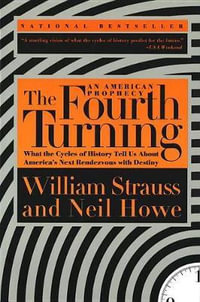Between the turn of the twentieth century and the Brown v. Board of Education decision in 1954, the way that American schools taught about "race" changed dramatically. This transformation was engineered by the nation's most prominent anthropologists, including Franz Boas, Ruth Benedict, and Margaret Mead, during World War II. Inspired by scientific racism in Nazi Germany, these activist scholars decided that the best way to fight racial prejudice was to teach what they saw as the truth about race in the institution that had the power to do the most good-American schools. Anthropologists created lesson plans, lectures, courses, and pamphlets designed to revise what they called "the 'race' concept" in American education. They believed that if teachers presented race in scientific and egalitarian terms, conveying human diversity as learned habits of culture rather than innate characteristics, American citizens would become less racist. Although nearly forgotten today, this
educational reform movement represents an important component of early civil rights activism that emerged alongside the domestic and global tensions of wartime.
Drawing on hundreds of first-hand accounts written by teachers nationwide, Zoë Burkholder traces the influence of this anthropological activism on the way that teachers understood, spoke, and taught about race. She explains how and why teachers readily understood certain theoretical concepts, such as the division of race into three main categories, while they struggled to make sense of more complex models of cultural diversity and structural inequality. As they translated theories into practice, teachers crafted an educational discourse on race that differed significantly from the definition of race produced by scientists at mid-century.
Schoolteachers and their approach to race were put into the spotlight with the Brown v. Board of Education case, but the belief that racially integrated schools would eradicate racism in the next generation and eliminate the need for discussion of racial inequality long predated this. Discussions of race in the classroom were silenced during the early Cold War until a new generation of antiracist, "multicultural" educators emerged in the 1970s.
Industry Reviews
"What makes this study valuable is its application of that [whiteness studies] literature to the history of progressive education, to the largely neglected history of the intercultural education movement, and, to the extent possible given the sources available, to how evolving academic ideas find their ways into actual public school classrooms. This is a solid intellectual history that should attract readers well beyond historians of education."--American
Historical Review
"[T]he book effectively demarcates different phases in the effort to promote tolerance and combat bigotry."--The Journal of American History
"Places a spotlight on the profound paradigm shift in understanding 'race' that occurred during and after WWII, especially in how race was taught in public schools."--CHOICE
"This book is the finest study of intercultural education to date. Burkholder does a masterful job tracing the history of this reform effort, which during the World War II years, sought to teach American students about the evils of racism and the virtue of tolerance. She focuses on three great anthropologists and educational activists, Franz Boas, Ruth Benedict, and Margaret Mead, who successfully challenged ideas of racial superiority and inferiority and
vigorously argued that respect for diversity was a core democratic value. Engagingly written and wonderfully researched, Color in the Classroom is a must read for anyone interested in how schools have
been used to strengthen American democracy."--Jeffrey Mirel, author of Patriotic Pluralism: Americanization Education and European Immigrants
"Anthropology's attempt to disseminate a progressive critique of structural inequalities based on race and class has always been less palatable to the public than the discipline's celebration of multicultural diversity. In this book, Zoe Burkholder tellingly depicts the dilemma activist anthropology has faced in American society. She shows how the celebratory stance has been politically ineffective, since it offers psychological solutions--in the form of
advocacy for 'colorblind' tolerance--to structural problems."--Richard Handler, University of Virginia
"Color in the Classroom examines American teachers' changing lessons about race during the first half of the twentieth century. Burkholder sheds new light on how anthropologists worked directly with educators during World War II to encourage an anthropological understanding of cultural differences. The mixed results of this effort yield insights for all who face the ongoing challenge of explaining the impact of race in a society where the ideal of
colorblindness exists alongside continuing racial inequalities."--Jennifer Ritterhouse, author of Growing Up Jim Crow: How Black and White Southern Children Learned Race
"Elegantly conceptualized and executed."--Jim Cullen, History News Network

























